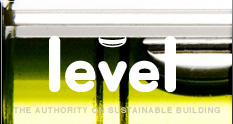Passive Design
Designing the building and the spaces within it to benefit from natural light, ventilation and even temperatures.
Room layout
Orient rooms to take advantage of the sun when it’s wanted, but avoid overheating and glare.
On this page:
- North-facing rooms
- East-facing rooms
- West-facing rooms
- South-facing rooms
- Outdoor living areas
- Air locks
In location, orientation and layout, we explained how building orientation can be used for passive heating and cooling. We also explained that rooms should be located to take best advantage of the sun – for example, by having living areas face north where they will receive all-day sun and service areas face south where they will receive little sun. This page provides more detail on ideal solar orientation for different types of room.
As discussed in location, orientation and layout, solar orientation will have to be considered alongside other factors such as noise, views, privacy, and passive cooling features such as ventilation and shading.
For solar gain, it is also important to consider the thermal performance and solar heat gain efficiency of the glazing unit itself. In general, north-facing windows should be efficient at letting solar radiation into the building (see glazing and glazing units for more).
North-facing rooms
The main living spaces such as living, family and dining rooms should be north facing where possible. North-facing rooms:
- have good daylight most of the day
- have solar gain for most of the day throughout the year
- are likely to require horizontal shading to prevent overheating in summer
- have good passive solar gain in winter.
East-facing rooms
East facing rooms are most suited as kitchen and breakfast areas as they can benefit from early morning solar gain throughout the year and will be cooler in the late afternoon when evening meal preparation takes place. They:
- have good morning light
- have solar gain in the morning throughout the year to provide initial warming
- will be cooler in the late afternoon.
Bedrooms that face east will be cooler in the late afternoon and evening, making them more comfortable for summer sleeping. Early risers generally appreciate east sun in spaces they will use first thing in the morning such as breakfast bars.
West-facing rooms
As west-facing rooms get low-angle, late afternoon sun, they usually require some shading to prevent overheating and excessive glare, particularly during the summer. They:
- have good afternoon daylight
- can overheat in the late afternoon for much of the year
- may require vertical shading to prevent excessive overheating and glare in the afternoon
- provide good direct solar gain for thermal mass heating of living spaces in the evening.
A west-facing orientation is suitable as a living area in households where occupants are away from home during the day-time but at home in the evenings. It is not generally suitable as a kitchen as the heat from dinner preparation coincides with low-angled afternoon and evening sun, potentially causing glare and overheating.
South-facing rooms
South-facing rooms are not suitable for habitable spaces as they:
- have lower levels of daylight during parts of the year
- have little or no heat gain.
They are most suited for the location of the garage, laundry, bathroom, toilet, workroom and stairs, where people spend little time and/or use infrequently.
Outdoor living areas
In general, outdoor living areas should be north-facing so they receive the sun when they are in use. As discussed in location, orientation and layout, if the building is located towards the south of the site, this will provide a north-facing outdoor area.
Air locks
An additional design feature for both heat retention and heat exclusion is to include an air lock or space between the exterior and indoor living areas. Air locks are especially useful in high wind areas. An air lock needs to be able to be closed off from both the outside and the inside spaces and may be:
- an entry lobby (which can usefully provide storage for coats, shoes and so on)
- a laundry
- a mud room
- an attached garage - a garage with a large garage door that is very air leaky and that is often not insulated may not be the most effective airlock space.
The space should be sufficiently large to allow doors to be opened with ease, as insufficient space is likely to result in a door being left permanently open, defeating the purpose of the air lock. Sliding doors are not a satisfactory option as they tend to be draughty and are difficult to seal.
Update: 24 September 2020

